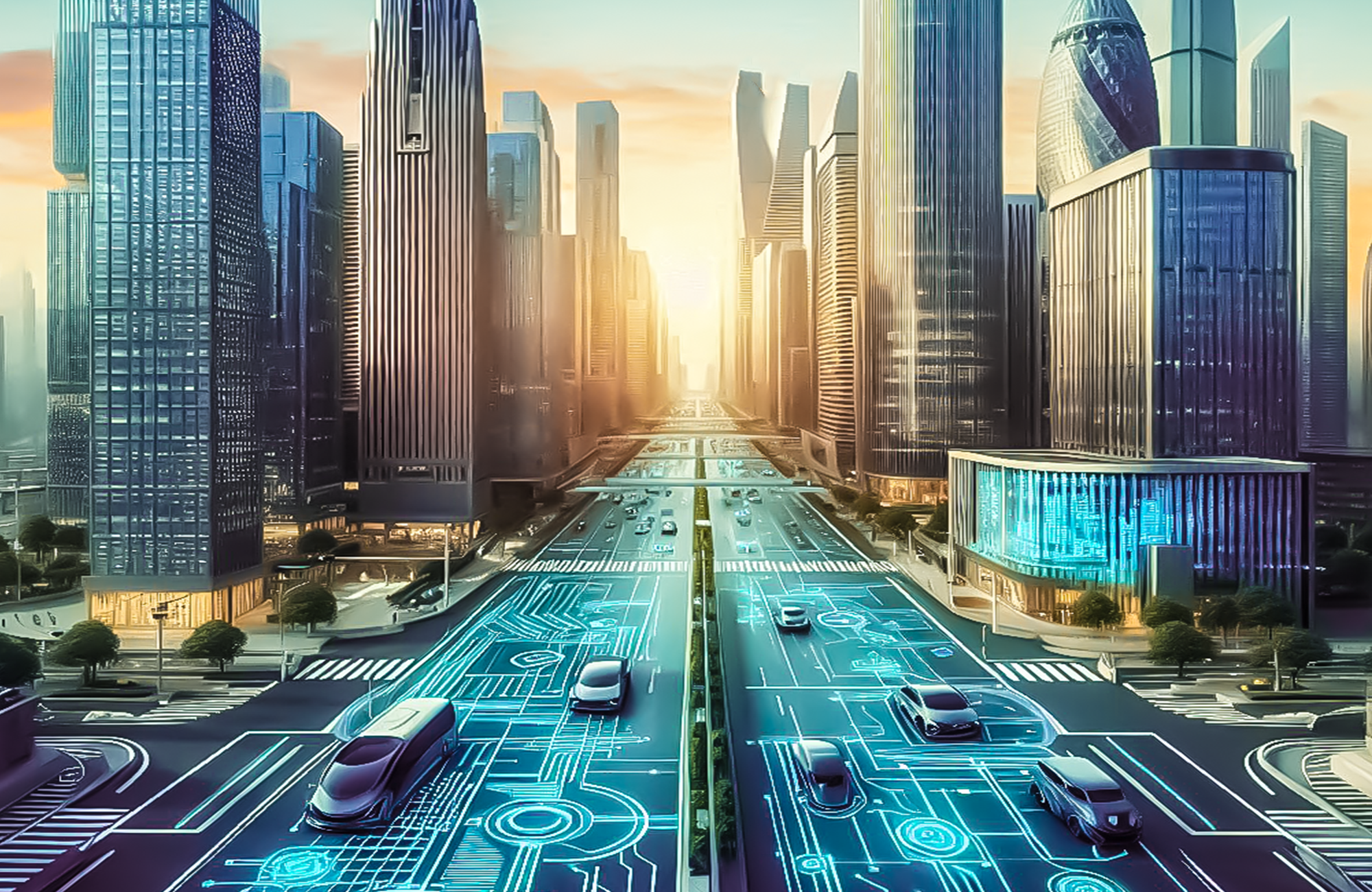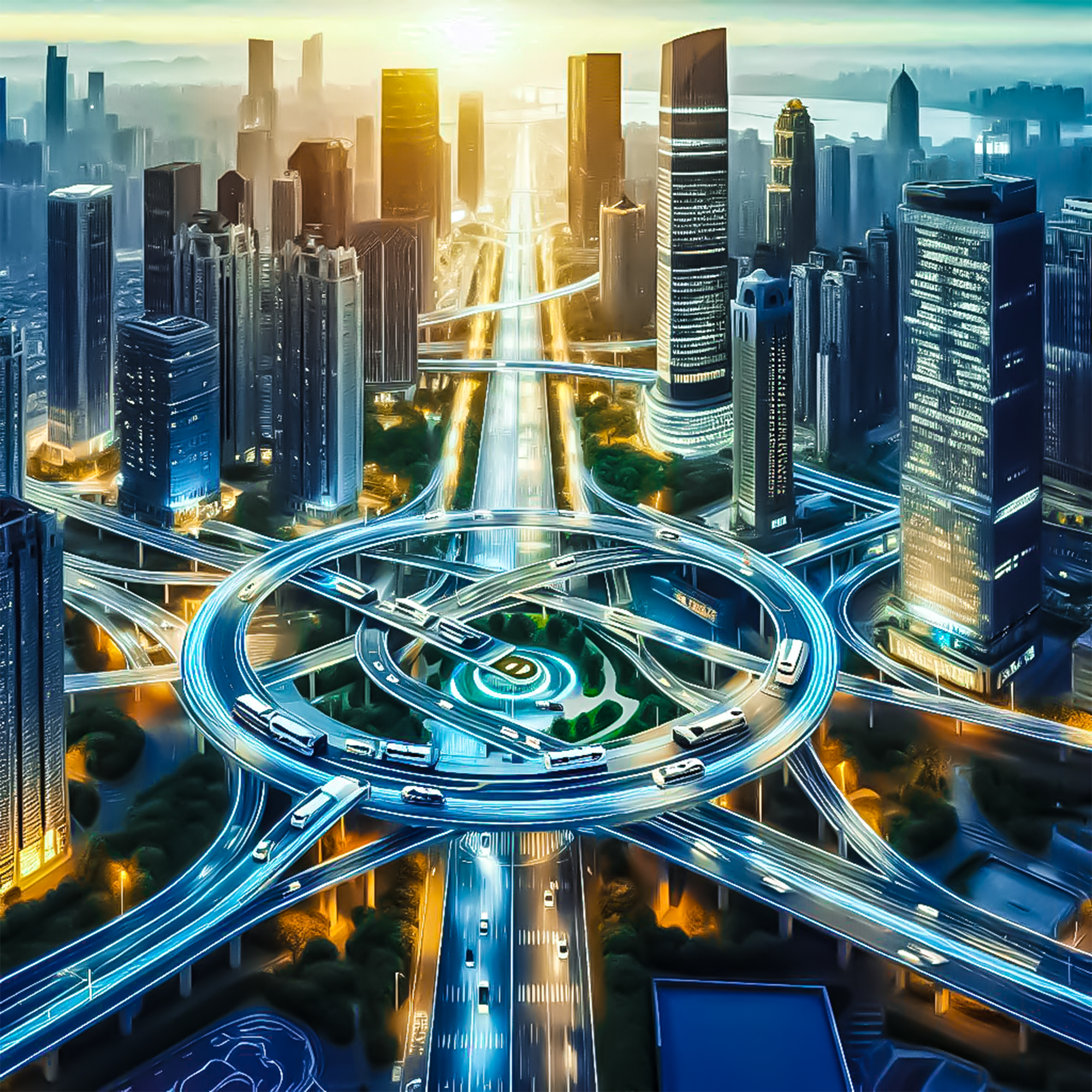China’s Rapid Push to Build a Nationwide Smart City Network
China pushes the boundaries in urban living by rapidly developing smart cities that feature integrated intelligent vehicles, smart roads, and real-time cloud technologies.
China has been on the lead when it comes to technological advancement, and in the past years, its efforts to build smart cities have been near groundbreaking. China is integrating intelligent vehicles, smart roads, and real-time cloud technologies to transform urban landscapes into efficient, sustainable, and technologically advanced environments. This paper sheds light on the components, benefits, and future prospects for China’s smart city initiatives.
Concept of Smart Cities
1. What is Smart City?
A smart city is an urban condition where views of performance, as well as well-being, can be enhanced through proper digital technology; reduction in costs and resource consumption; and engaging much more effectively with the citizens. It involves the use of information and communication technologies abbreviated as ICT so as to improve quality of life, drive economic growth, and also aspects of environmental sustainability.
2. China’s vision for Smart cities
China conceives a smart city framework with regard to an urban setting where there will be extensions of technology into everyday life. The matrix will range from intelligent vehicles and smart roads to cloud-based, real-time data processing systems for the betterment of urban living.
Key Components of China’s Smart City Initiatives
1. Intelligent Vehicles
a. Autonomous and Connected Vehicles
China is putting a lot into developing and rolling out the autonomous and connected vehicle device category of intelligent vehicles, fitted with advanced sensors, AI, and communication systems permitting them to navigate on their own, communicate among themselves, and with the urban infrastructure.
b. Benefits of Intelligent Vehicles
- Safety: Reduced human error leads to reduced accidents.
- Efficiency: Optimized traffic flow and reduced congestion.
- Environmental Impact: Lower emissions through efficient driving patterns.
2. Smart Roads
a. Infrastructure Development
Smart roads are equipped with sensors, cameras, and communication devices that monitor in real-time every instance of its condition, safety, and the environment. The roads communicate with intelligent vehicles for smooth and efficient management of traffic.
b. Features of Smart Roads
- Real-Time Monitoring: Continuously the road condition is monitored.
- Adaptive Traffic Signals: The traffic lights change depending upon the real-time traffic condition.
- Dynamic Lane Management: Lanes that change depending upon the traffic condition to manage the traffic flow.
3. Real-Time Cloud Technologies
a. Collection and Processing of Data
Cloud technologies are in the foreground of smart cities related to data collection, storage, and real-time processing. After that, the processed data is used to make informed decisions on traffic management, public safety, and urban planning.
b. Advantages of Real-Time Data Processing
- Response Time: Immediate action upon emergencies.
- Predictive Analytics: Anticipating and mitigating potential issues.
- Enhanced Services: Improved public services based on data-driven decision-making.
Implementation and Development
1. Nationwide Network
China has been building a Nationwide Network consisting of components such as intelligent vehicles, smart roads, and cloud systems. Indeed, next-generation infrastructure, advanced technologies, and an enabling regulatory environment require huge investments.
2. Pilot Projects
There have been various pilots across several cities in China that have acted as test beds for smart city technologies. These pilots would help fine-tune and optimize solutions before their larger diffusion.
3. Government and Private Sector Collaboration
The Chinese government partners with tech giants, carmakers, and urban planners in developing and fielding smart city technologies that ensure finished products will benefit from leading-edge technology fused with practical, grounded urban planning practices.
Benefits of Smart Cities
1. Urban Improved Livelihood
Smart cities provide improved quality of life by increased efficiency in services, less traffic congestion, improved safety features, and enhancement in public amenities.
2. Growth in Economy
The development of smart cities accelerates economic growth through job creation, attraction of investments, and innovation.
3. Environmental Sustainability
Smart cities aid in supporting environmental sustainability entailing reduced emissions, working out optimum utilization of resources, and promoting green technologies.

Future Prospects
1. Expanding Coverage
China looks to extend smart city initiatives to more urban and rural areas, ensuring that the gains from technology reach a wider mass of people.
2. Continuous Innovation
Ongoing research and development will lead to new and improved technologies, further increasing the potential of smart cities in terms of what they can do and achieve.
3. Global Leadership
China wants to be a global leader in smart city development, pure and simple—by setting standards for smart city development and providing needed expertise to interested countries in developing their own smart cities.
Expert Insight
1. Urban Planners and Technologists
Urban planners and technologists view smart city initiatives in China as the archetype for how the future urban development for the rest of the world. According to Dr. Li Wei, a specialist in urban planning, “China’s smart city projects demonstrate ways through which technology is changing the face of urban living. Intelligent systems are being integrated to lead to cities of the future.”
2. Environmentalists
Environmentalists also view the development of smart cities in China as being more oriented towards sustainability. “Smart cities are one step towards reducing our carbon footprint and creating sustainable urban environments,” says Wang Xia, an environmental scientist.
Conclusion
Chinese smart city building efforts, accelerated at a high pace, are turning out to be a role model for urban development worldwide. Chinese cities are being remolded into an efficient, sustainable, and livable environment by intelligent vehicles, smart roads, and real-time cloud technologies. This will extend from better urban living through economic growth to environmental sustainability. As innovations get dovetailed and the smart city projects are expanded in China, the future of urban living becomes increasingly intelligent and interlinked.
More updates coming on what’s in store for the future of urban living!
— Zhang Wei, Technology Strategist

The integration of intelligent vehicles, smart roads,
and cloud technologies represents a major leap
forward in our quest for smart cities.




